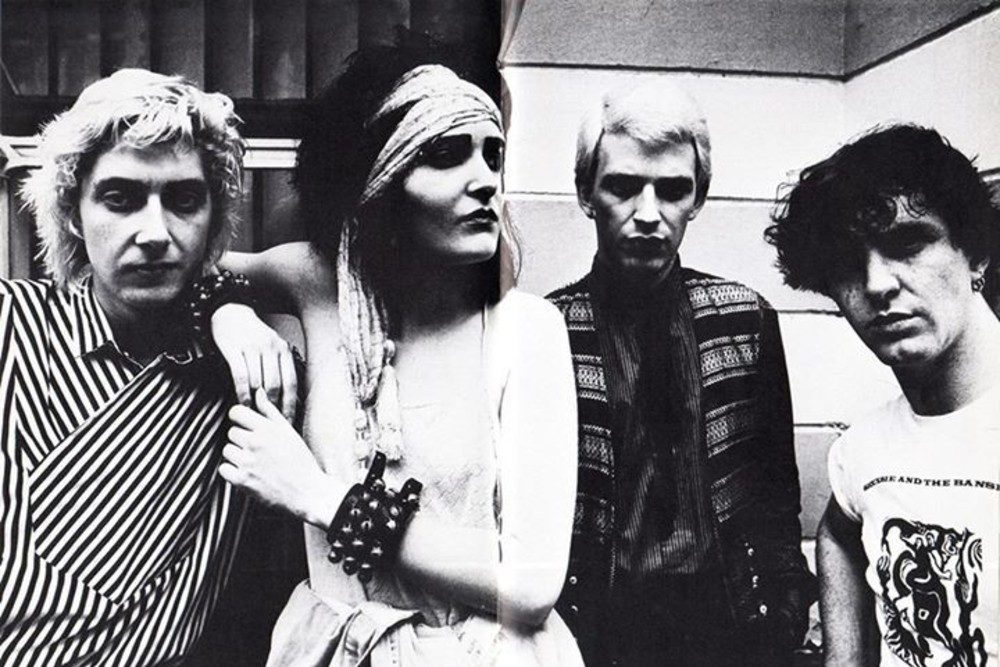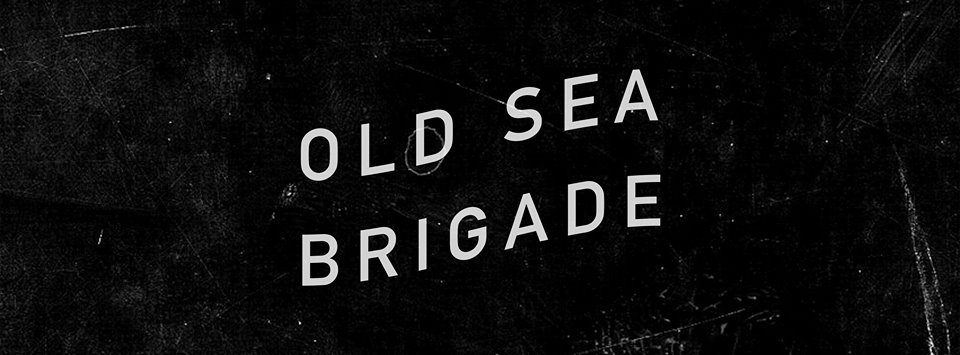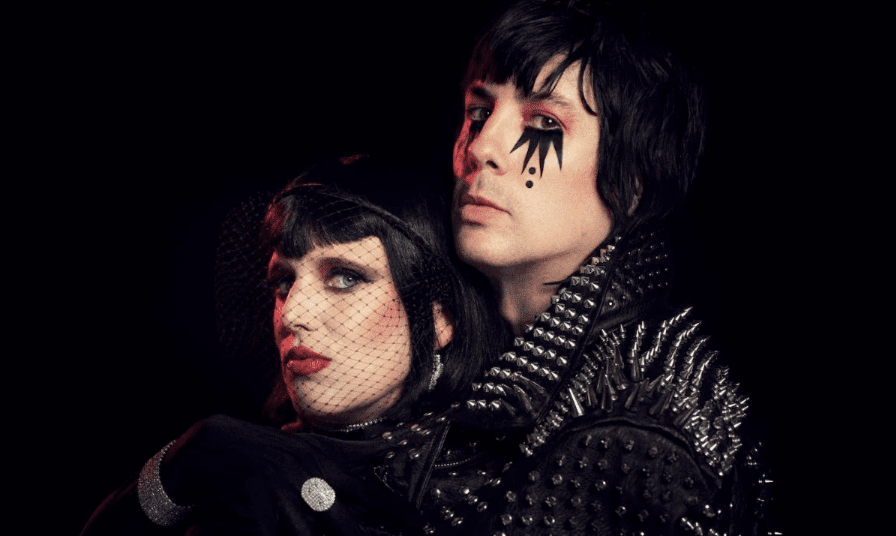Looking Through Siouxsie and The Banshees’ Kaleidoscope 40 Years After its Release


On August 1, 1980, Siouxsie and the Banshees released Kaleidoscope, their third album in just as many years. The album would mark a creative shift, arguably the beginning of a golden age for a group that would go on to become one of the most influential of the late 20th century.
Forty years later, the impact of Kaleidoscope has been felt across genres, from the multiple reinventions of “Happy House” as a dance track, to the status of “Christine” as a staple of classic alternative playlists, to the enduring appeal of “Red Light” on goth club dance floors. In relation to the rest of the band’s canon, Kaleidoscope may not have received the as much consideration as Juju (which turns 40 next year), but it’s no less important. Kaleidoscope is a direct predecessor to the Banshees’ beloved fourth album, not just in terms of chronology, but also in sound. It’s hard to see how Juju could’ve existed without the experimentation that happened on Kaleidoscope.
There are a lot of ways to read Kaleidoscope. Given the year it was released, it’s easily categorized as a post-punk album – and that’s a fair, but simplistic assessment. Pretty much all of the band’s music was released in the aftermath of punk, and they were more than ready to forge something new. Siouxsie and the Banshee’s 1978 debut album, The Scream, stands out as an artifact of their London punk beginnings, although it was released after that moment had passed. Their follow-up, Join Hands, shows a band that’s thoughtful (they used World War I as a theme for the album), ambitious and on the cusp of greatness. Kaleidoscope is when they reached that milestone.
Partially, this was due to the new members. Kaleidoscope was Siouxsie and the Banshees’ first album with both drummer Budgie, who would remain a part of the band for the rest of its duration, and guitarist John McGeoch, whose tenure with them would also include the albums Juju and A Kiss in the Dreamhouse.
Budgie, who had previously played with The Slits, entered the fold for the Join Hands tour. In time, he would become a profoundly influential drummer and, on Kaleidoscope, you can hear how his versatility helps shape the songs.
John McGeoch, largely considered to be one of the most innovative guitarists of his generation, was a catch. He was a member of Magazine who side-gigged with Visage at the end of the ’70s. In a BBC documentary on McGeoch, who died in 2004, Banshees co-founder and bassist Steven Severin said that he had been looking to poach a guitarist from another band when he saw Magazine perform “The Light Pours Out of Me” on television.
“This was the moment I thought, it’s got to be him,” he said in the documentary. The first time the musicians practiced together, McGeoch brought in the bones of what would become “Happy House,” their first single from Kaleidoscope and a U.K. chart hit.
Vocally, Kaleidoscope is an album where Siouxsie gets to play with different facets of performance. On “Happy House,” she imbues lines like “We’re happy here in the happy house/Oh, it’s such fun” with a kind of joyful sarcasm. She forgoes lyrics on “Clockface,” relying simply on syllabic howling to kick up the atmosphere. With “Lunar Camel,” she taps into a more subdued, whimsical character, but immediately follows it with the urgency of “Christine.”
In the U.S., “Christine” became one of the band’s more recognizable singles, the sort of song that you would hear on alternative radio stations throughout the decade and, later, at ’80s flashback nights. It was one of two songs referencing Chris Costner Sizemore, the woman whose experience with dissociative identity disorder (then known as multiple personality disorder) was the basis for the book (and subsequent film) The Three Faces of Eve. Its b-side, “Eve White/Eve Black,” was also about Sizemore. McGeoch’s dramatic strums throughout the song heighten the tension in the narrative of what is, otherwise, one of the more pop-leaning cuts on the album.
If there’s one song that I always associate with goth clubs, it’s “Red Light,” also found on Kaleidoscope. Maybe I make that connection because it’s the first song I recall hearing on that night in the mid-1990s when I fell into the Los Angeles club world. Maybe it’s because I heard the song so often, over a period of years, across the city. The venues would change, but the scene was always the same – corseted dancers with teased hair and faces made up MAC-perfect, moving gracefully to the creepy-crawly beat. Some would strike a pose with the percussive camera shutter sounds. Even the more mainstream Siouxsie and the Banshees songs, like later singles “Cities in Dust” (from 1986’s Tinderbox) or “Peek-a-Boo” (from 1988’s Peepshow), didn’t have that kind of command of the crowd. This was like watching a ritual: you go to the goth club, you dance to “Red Light.”
Seeing how influential Siouxsie and the Banshees would be on the goth scenes that developed over the course of decades, you could say that it’s one of the seminal albums of that movement. This wouldn’t be an entirely incorrect statement, but it’s not altogether accurate either. There are a lot of nuances within Kaleidoscope that are lost when you stick a genre label on it. It’s a dense album with synths and even a sitar layered with the standard rock instruments. It gives off vibes of Can and Eno-era Roxy Music and Kraftwerk (who the band would cover a few years later, on ’87 LP Through the Looking Glass), while retaining its own, distinct identity as a Siouxsie and the Banshees album.
In its time, Kaleidoscope was praised by critics and name-checked by contemporaries like The Cure and The Jam. Years later, it would be embraced by newer generations of artists, not just as an influence, but as a building block. Multiple DJ/producers have taken a stab at remixing “Happy House” – the title alone lends itself to club play – and The Weeknd sampled it on his debut mix tape House of Balloons. Santigold interpolated “Red Light” on “My Superman” and a sample of “Lunar Camel” pops up on Top Ranking, her 2008 mixtape with Diplo. Now, on its 40th anniversary, you should give Kaleidoscope a spin too.




